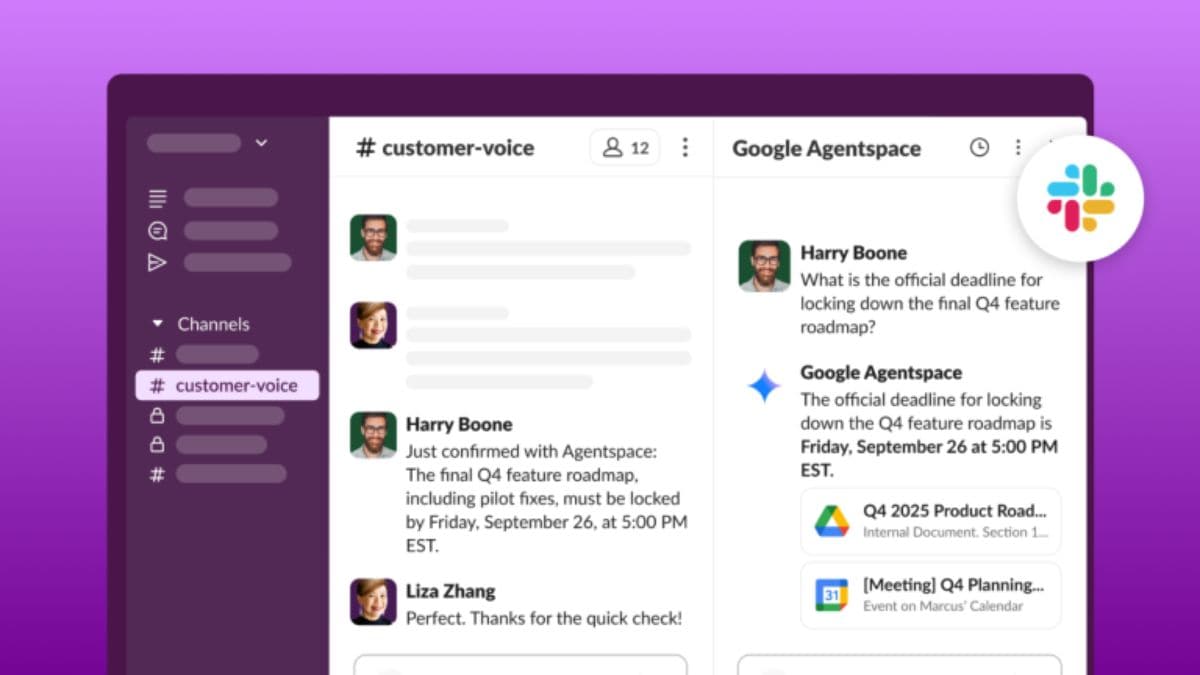Slack, on Thursday, announced the expansion of the platform to let developers build artificial intelligence (AI) tools and agentic workflows based on its conversational data. The system is based on a real-time search (RTS) application programming interface (API), a dedicated Model Context Protocol (MCP) server, and developer-focused tools such as Block Kit Tables. With this, the enterprise-focused communication and collaboration platform will let third-party developers and even enterprises build secure and context-aware AI apps and agents that can access the platform's chat data to automate tasks.
Slack to Let Developers Access Its Data for AI Apps and Agents
Traditionally, AI assistants in workplace tools have struggled because they lacked context. From chat histories, thread details, to task-based nuances remain fragmented behind data silos. Slack, in a press release, stated that it aims to break those barriers by letting third-party AI app and agent developers access its conversational data.
The way Slack wants to do it involves an RTS API and Anthropic's MCP-based server. The API gives real-time access to conversational data of the platform that includes current discussions, files, and channels. The company says it has focused on security by only letting AI agents interact with the data, but not letting them bulk download it or store it elsewhere. Additionally, businesses can dictate access permissions.
On the other hand, the MCP server standardises how LLMs, AI apps, and agents discover contextual information and execute tasks on behalf of Slack users. It offers a unified communication layer between the LLm and Slack to connect to data sources and tools. This saves developers the hassle of manually defining each task an agent can perform.
Slack said that several companies have already begun integrating this offering. For instance, Anthropic's Claude can now search across Slack channels, threads and files to ground responses in work-related conversations. Similarly, Google's Agentspace integration connects Slack data with its AI agents. Perplexity, Writer, Dropbox, Notion, Cognition Labs, Vercel, and Cursor have also started adopting the integration.
The new capabilities are currently in closed beta, with full general availability expected in early 2026. Slack Work Objects, a feature that will help embed third-party data directly into conversations, will roll out more broadly by late October.

Comments
Post a Comment